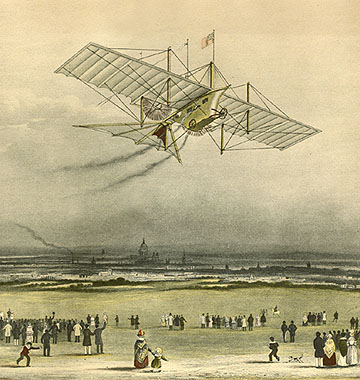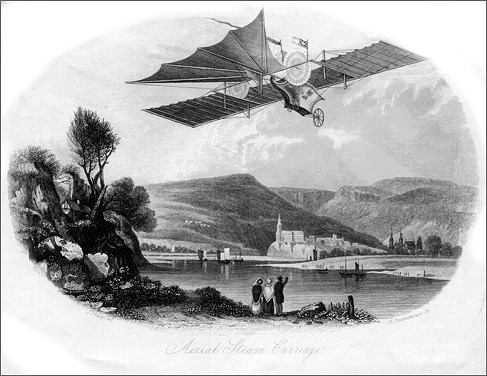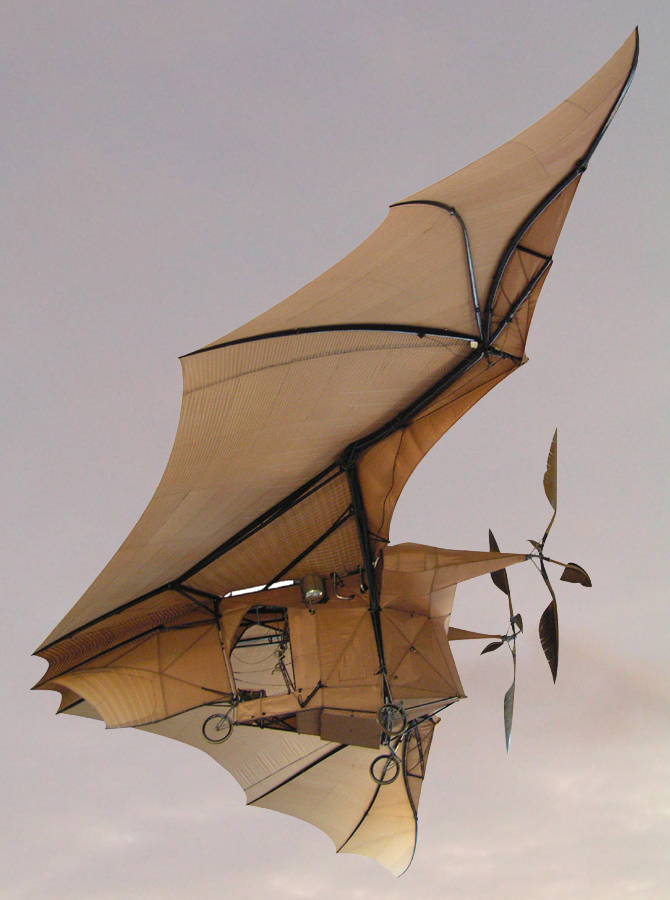The Aerial Steam Carriage
The Henson Aerial Steam Carriage of 1843 (imaginary representation for an advertisement).
Patent drawing for the Henson Aerial Steam Carriage of 1843.
- 1842: The Aerial Steam Carriage of William Samuel Henson and John Stringfellow was patented, but was never successful, although a steam-powered model was flown in 1848.
- 1852: Henri Giffard flew a 3-horsepower (2 kW) steam-powered dirigible over Paris; it was the first powered aircraft.
- 1861 Gustave Ponton d'Amécourt made a small steam-powered craft, coining the name helicopter.
- 1874: Félix du Temple flew a steam-powered aluminium monoplane off a downhill run. While it did not achieve level flight, it was the first manned heavier-than-air powered flight.
- 1877: Enrico Forlanini built and flew a model steam-powered helicopter in Milan.
- 1882: Alexander Mozhaisky built a steam-powered plane but it did not achieve sustained flight. The engine from the plane is in the Central Air Force Museum in Monino, Moscow.
- 1890: Clément Ader built a steam-powered, bat-winged monoplane, named the Eole. Ader flew it on October 9, 1890, over a distance of 50 metres (160 ft), but the engine was inadequate for sustained and controlled flight. His flight did prove that a heavier-than-air flight was possible. Ader made at least three further attempts, the last two on 12 and 14 October 1897 for the French Ministry of War. There is controversy about whether or not he attained controlled flight. Ader did not obtain funding for his project, and that points to its probable failure.[1]
- 1894: Sir Hiram Stevens Maxim (inventor of the Maxim Gun) built and tested a large rail-mounted, steam-powered aircraft testbed, with a mass of 3.5 long tons (3.6 t) and a wingspan of 110 feet (34 m) in order to measure the lift produced by different wing configurations. The machine unexpectedly generated sufficient lift and thrust to break free of the test track and fly, but was never intended to be operated as a piloted aircraft and so crashed almost immediately owing to its lack of flight controls.
- 1896: Samuel Pierpont Langley successfully flew unpiloted steam-powered models.[2]
- 1897: Carl Richard Nyberg's Flugan developed steam-powered aircraft over a period from 1897 to 1922, but they never achieved more than a few short hops.
Ader Avion III




No comments:
Post a Comment